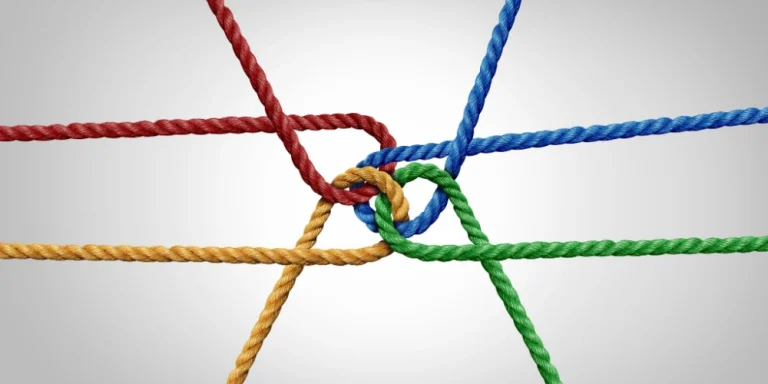How to Cast Binding Spells
Casting a binding spell can be a powerful and effective way to protect yourself, control certain situations, or influence energies without causing harm. These spells work by using your intention to restrict the negative behaviours or influence of another person or situation, creating a boundary that prevents harm from coming your way. Unlike other forms of magic, binding spells are typically neutral, as their purpose is not to cause harm but to prevent it.
To successfully cast a binding spell, you must first clarify your intentions. Are you trying to protect yourself from someone’s bad energy, or is there a behaviour you want to stop? Maybe you’re seeking to prevent a harmful situation from progressing. Whatever the case, having a clear purpose will focus your energy, making the spell more powerful.
Here’s a step-by-step breakdown of how to cast a basic binding spell:
- Set Your Intention: Before starting, think deeply about what you want to achieve. The clearer your intention, the stronger the spell will be. Meditate or sit quietly to focus your mind.
- Gather Materials: You’ll need a few simple items, depending on the type of binding spell you’re casting. Common supplies include paper, a black candle, string, or even personal items tied to the person or situation you want to bind.
- Write It Down: Writing down the name of the person or situation on a piece of paper can help you focus your intent. Be specific, especially if you’re targeting a particular behaviour.
- Perform the Ritual: Most binding spells involve some form of knotting or tying to symbolize the restriction of the person or situation. You can use string, ribbon, or even mentally visualize the binding while repeating a chant like, “I bind you from harming me, and all harm will stay away.”
- Visualize the Outcome: As you chant or tie knots, visualize the energy or person being contained, unable to cause harm or influence you negatively anymore. This visualization is key in manifesting your intention.
- Close the Spell: After completing the binding, safely dispose of any materials used, like burying the tied string or burning the paper. This signifies the closure of the spell and the sealing of your intentions.
While binding spells are typically used for protection and control, remember they should not be taken lightly. Their impact can be profound, so it’s important to consider all possible outcomes and ensure your intention is aligned with positivity and fairness.
Types of Binding Spells
Binding spells can be adapted from personal protection to preventing negative behaviours. Here are some common types:
- Protection Binding Spells: These spells protect you from another person’s harmful intentions or energies. They create a spiritual shield, ensuring you are not affected by negative influences.
- Behaviour Modification Binding Spells: Used to influence someone’s behaviour, these spells aim to stop harmful actions, like bullying or harassment, without causing harm to the individual.
- Self-Binding Spells: Sometimes, people bind themselves to prevent bad habits or negative emotions from controlling their actions, such as preventing anger or addiction.
Ethical Considerations Before Casting
Before casting any spell, it’s crucial to consider the ethical implications. Binding someone or something involves influencing their free will, which can have spiritual consequences. If the spell is cast with malicious intent or for personal gain at another’s expense, it may backfire or carry karmic consequences.
Key ethical guidelines include:
- Intent Matters: Always ask yourself why you are casting the spell. Are you doing it to protect yourself, or to control another person? If the latter, consider alternative methods like direct communication or professional mediation.
- Respect Free Will: Binding spells should never be used to force someone into doing something against their will. If you want to manipulate someone’s feelings or decisions, reconsider casting the spell.
- Non-Harmful Intentions: Ensure that your spell does not cause harm to anyone involved. Binding spells are typically neutral in effect, meant to block or limit actions, not to inflict pain or suffering.
How Binding Spells Work
Binding spells work by harnessing your focused intention and energy, often using physical objects or symbolic actions to manifest the desired effect. Whether using a chant, tying knots, or burying an object, the actions taken during a binding spell channel your intent into the universe, creating a spiritual or energetic boundary.
Is It Possible to Cast a Binding Spell on Someone Without Them Knowing It?
Yes, it is entirely possible to cast a binding spell on someone without them knowing. In fact, many binding spells are designed to be discreet, especially if the person you’re binding is unaware of the spell being cast. The reason this works lies in the energy and intent behind the spell, not the physical awareness of the person involved.
In the realm of magic, intention is everything. Binding spells work by focusing your energy on a person or situation, not necessarily through their direct involvement. The person you are binding doesn’t need to know for the spell to be effective. Instead, the magic operates energetically, influencing the forces around you and the target.
Final Thoughts
Binding spells can be powerful tools when used responsibly and with clear, positive intentions. Remember that the energy you put into your spell will influence the outcome. Always perform these spells with respect for the spiritual forces at play, and ensure that your goal is aligned with your highest good.
By following these guidelines and practicing ethical spellcasting, you can safely and effectively cast binding spells to protect yourself, create boundaries, and maintain peace in your life.




